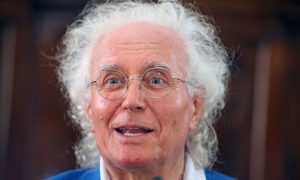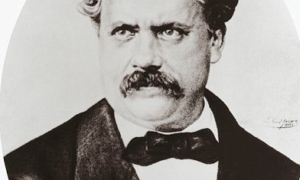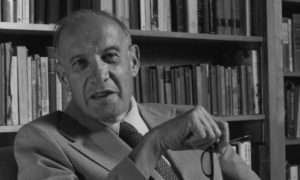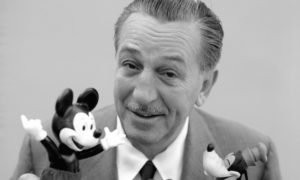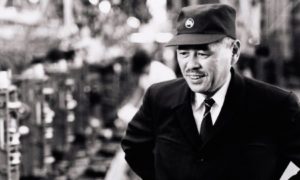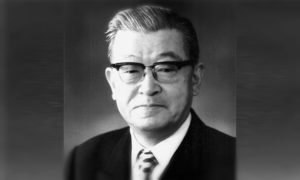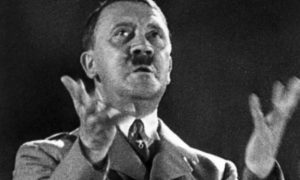Religion
Mother Teresa of Calcutta

| Personal information | ||
|---|---|---|
| Full name | Ganxhe Agnes Bojaxhiu | |
| Birthdate | August 26, 1910 | |
| Date of death | September 5, 1997 | |
| Cause of death | Heart attack | |
| Occupation | Religious sister | |
| Pseudonym | Mother Teresa | |
| Nationality | Albanian | |
| Parents | Nikölle Bojaxhiu | |
| Awards | Nobel Peace Prize, 1979 | |
| Zodiac sign | Virgo | |
| Biography in other languages | ||
Biography of Mother Teresa of Calcutta
Mother Teresa of Calcutta was an Albanian religious sister, who was naturalized in India. She was born on August 26, 1910 in Skopje (Macedonia), and was baptized as Ganxhe Agnes Bojaxhiu. She grew up in a Catholic family, and her mother’s deep religiosity awakened in her, at the age of twelve, the vocation of a missionary. She entered the Congregation of the Mariana Sisters of Mary at a very young age, where she began her assistance activities with the most needy. She was the youngest of the children of Nikola and Drane Bojaxhiu, made her First Communion at the age of five and a half, feeling from that day on the love for souls inside her. In November 1916, she received Confirmation.
On August 15, 1928, while praying at the feet of the Virgin of Letnice, she heard the divine call to serve God. On September 26 of that same year, after turning 18, she left her home to enter the Institute of the Blessed Virgin Mary, known as the Loreto Sisters in Rathfarnham (Ireland). There she received the name Sister Mary Teresa, and in December she began her journey to India, arriving in Calcutta on January 6, 1929. After accepting her first vows in May 1931, she was assigned to the Loreto Entally community in Calcutta, where she taught at the Santa Maria School for Girls. In May 1937, Sister Teresa made her perpetual vows, becoming, as she herself said, the “Wife of Jesus” for “eternity”. She continued teaching for almost twenty years, and in 1944 was named director of that school..
In September 1946, during a trip from Calcutta to Darjeeling (a city in the Indian state of West Bengal), to make her annual retreat, Mother Teresa of Calcutta received her “Call within the call” inspiration. That day, in a way she would never explain, the thirst for souls took over her heart and the desire to quench Jesus’ thirst became the driving force of her entire life. Then, through visions, Jesus revealed to her his pain for the forgotten poor and asked Mother Teresa to found a religious congregation dedicated to the service of the poorest of the poor. It took almost two years of testing and discernment before she received authorization to begin.
In 1948, when she obtained the permission given by Pope Pius XII to exercise her pastoral service as an independent nun, she first wore the white cotton sari edged with blue and left her beloved Loreto convent to face the world of the poor. After a short course with the Missionary Medical Sisters in Patna, she returned to Calcutta where she found temporary housing with the Poor Sisters, in December of that same year she first went to the poor neighborhoods taking care of the sick elderly on the street, visited families, cared for a dying woman from tuberculosis and hunger.
“Who does not remember those admirable images of Mother Teresa with a child in her arms in the middle of the line of fire?” Dominique Lapierre
On October 7, 1950, the Holy See authorized the New Congregation of the Missionaries of Charity. This year she also adopted Indian nationality. At the beginning, the Congregation only had 13 members in Calcutta, over time it grew to have more than four thousand members distributed in Orphanages, Hospices and AIDS centers around the world, the congregation offered charity and care to all the poor, blind, disabled, alcoholics, sick, homeless, elderly, etc.
In 1952, she inaugurated the first home where the dying were assisted in Calcutta. In 1955, she founded the institution “Home of the Child of the Immaculate Heart” for all homeless and orphaned young people; later she opened the “Shanti Nagar” center, a place for those suffering from leprosy, all this was possible thanks to the collaboration of the Missionaries of Charity providing medical care and food.
In 1962, she was recognized for the first time by the Indian government with the award “Padma Shri”. In 1963, she founded the male branch of her congregation called “Missionary Brothers of Charity”.
Pope Paul VI during his trip to Bombay (for the occasion of an Eucharistic Congress) in 1964, gifted her with a car which later Mother Teresa of Calcutta auctioned off to raise money to found a site to assist lepers, achieving her goal she called it “City of Peace”.
In 1965, her order began to spread throughout the world, her congregation was established in Venezuela with only five religious sisters and in 1968 it already had establishments in Rome, Asia, Africa, Europe, Austria, United States, etc.
In 1969 she continued to receive notable awards in India such as the award “Jawaharlal Nehru”.
In the 70s, Mother Teresa of Calcutta was already internationally known with a reputation as a humanitarian, defender of the poor and defenseless for whom she worked tirelessly.
In 1971, due to the war between India and Pakistan, there were many violations of women, which is why they committed suicide, went mad and fled, in addition they were prohibited from marrying and having children during that stage. Mother Teresa joined forces with her sisters establishing sites to shelter them providing them with all the necessary care.
Nobel Peace Prize
In 1979, she received the “Nobel Peace Prize”. And the highest civilian decoration of India awarded to a civilian person, on March 22, 1980 the “Bharat Ratna”. In 1982, she rescued 37 children trapped in a hospital after negotiating a ceasefire between the Israeli army and Palestinian guerrillas. In 1983, she suffered a heart attack in Rome while visiting Pope John Paul II.
In the 80s, she expanded efforts in communist countries where the Missionaries of Charity had previously been ignored, she visited the Soviet Republic of Armenia after the Spitak earthquake in 1988. She also traveled to Ethiopia to care for several starving, orphaned, sick children, as well as the victims of the Chernobyl accident, for which she was given the Gold Medal of the Soviet Committee of Peace. In 1989 she had a second heart attack and a pacemaker had to be implanted.
In 1991, Mother Teresa returned to her homeland for the first time and opened a house of Missionary Brothers of Charity in Tirana (the capital of Albania). That same year, she overcame pneumonia during her visit to Mexico; due to her poor health, she decided to resign from her position as leader of the Missionaries, but through a vote the Missionaries did not accept her resignation, having to continue to lead the order. In 1993 she was hospitalized for pneumonia, and developed malaria that same year.
On March 13, 1997, she had to resign from her leadership of the Missionaries of Charity due to her delicate health and was replaced by Sister Maria Nirmala Joshi.
Mother Teresa of Calcutta passed away on September 5, 1997 at the age of 87 due to a heart attack in Calcutta (India).
On October 19, 2003, Pope John Paul II carried out her beatification in the Vatican City. Saying the following day with deep emotion: “Missionary of Charity, Missionary of Peace, Missionary of Life”.
On September 4, 2016, in the Vatican City, she was Canonized by Pope Francis. Teresa of Calcutta was a saint who transcended the barriers of Catholicism to become a symbol of all cults, she dedicated her life to giving love, attention to the most helpless and humble, her exemplary life transcended all the limits of the world.
Awards given to Mother Teresa
- 1971 International Peace Prize “Juan XXIII”.
- 1971 Kennedy Prize.
- 1972 Nehru Prize.
- 1973 Templeton Prize (In recognition of the progress of religious values).
- 1975 Albert Schweitzer International Prize.
- 1976 Pacem in Terris Prize.
- 1978 Balzan Prize for humanity, peace and brotherhood among peoples.
- 1979 Order of the Liberator (Venezuela).
- 1979 Nobel Peace Prize.
- 1980 Bharat Rat
Some memorable quotes by Mother Teresa
- “I cannot stop working, I will have all eternity to rest”.
- “Peace begins with a smile”.
- “He who does not live to serve does not serve to live”.
- “We must do ordinary things with extraordinary love”.
- “A word, a glance is often enough to fill a child’s heart”.
- “We spend so much time earning a living, but not enough time living”.
- “We cannot do great things, but we can do small things with great love”.
- “The fruit of silence is prayer, the fruit of prayer is faith, the fruit of faith is love, the fruit of love is service, the fruit of service is peace”.

Religion
Peter the Apostle (Saint Peter)
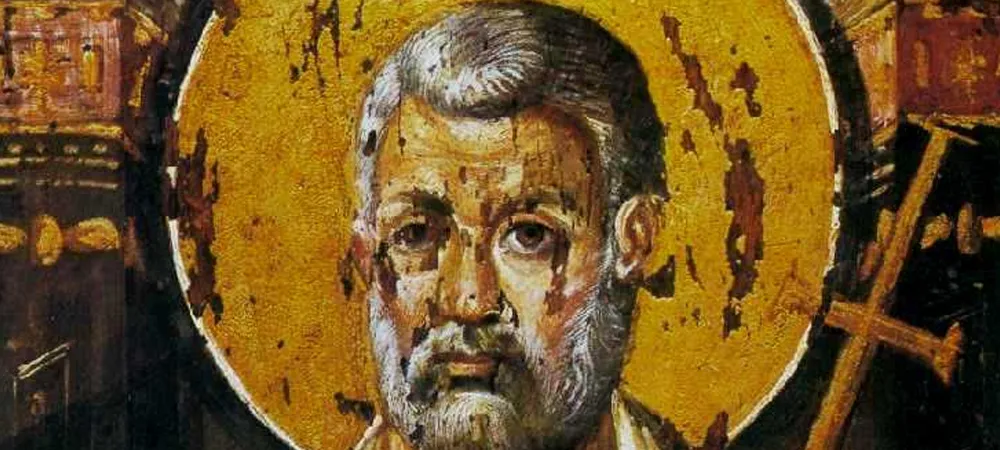
Biography of Saint Peter
Saint Peter (late 1st century BC – 64 AD) was an apostle of Jesus Christ and the first leader of his Church. He was born in Bethsaida, Galilee, Israel. He worked as a fisherman on the Sea of Galilee, usually with his brother Andrew, who was also an apostle. He lived with his wife, children, and mother-in-law in Capernaum. Peter began to hear Jesus of Nazareth frequently until he decided to accept his call and join his work to share his teachings. Gradually, a group of mostly brotherly fishermen was formed, including his brother Andrew and his sons Zebedee, James, and John. They were called the twelve apostles.
Among the apostles
Of the twelve apostles, Peter was one of the most distinguished for his strong personality and his closeness to the teacher. Therefore, he assumed a leadership and spokesman role for the group. In the Gospels, his personality is exposed: simple, generous, and impulsive in his interventions. Hence, Jesus showed a predilection for his person from the beginning. Along with Apostle James and Evangelist John, Peter had the opportunity and privilege to participate in intimate rituals that excluded the other apostles. It is said that Jesus must have often been a guest of Peter’s family..
Baptism

The Denial of Saint Peter by Caravaggio
Peter’s name was Simon, but Jesus baptized him Peter by pointing to him as the “rock” on which his Church would be built. This happened in Caesarea Philippi, northeast of the Sea of Galilee. Saint Peter affirmed Jesus’ divinity, which is written in Matthew 16:16-19. When Peter says, “You are the Christ, the Son of the living God,” Jesus conferred the highest authority on Peter: “Blessed are you, Simon, son of Jonah, for flesh and blood has not revealed this to you, but my Father who is in heaven. And I tell you that you are Peter, and on this rock I will build my church, and the gates of hell will not prevail against it.”
Although his personality was impetuous, he also had moments of weakness. According to the Gospel, Saint Peter denied knowing Jesus three times the night he was arrested, fulfilling a prophecy that the teacher had made to him. But, repentant of that act, his faith never wavered again and, after the crucifixion and resurrection, he was privileged with the first appearance of Jesus and devoted himself to popularizing his teachings.
“Then he began to curse and swear, ‘I do not know the man!’ And immediately a rooster crowed. And Peter remembered the words of Jesus, ‘Before the rooster crows, you will deny me three times.’ And he went out and wept bitterly.” Matthew 26:74-75
Saint Peter, leader of the Church
In the year 30 AD, after the death of Jesus, Saint Peter took on the challenge of being the undisputed leader of the tiny community of the first Christian believers in Palestine for fifteen years: he led prayers, responded to accusations of heresy from Orthodox rabbis, and admitted new followers (he was responsible for accepting the first non-Jews). Years later, he was imprisoned by King Herod Agrippa’s orders, but he was able to escape and leave Jerusalem, dedicating himself to spreading the new religion in Syria, Asia Minor, and Greece.
At that time, his leadership was less evident, with other apostles, such as Paul or James, contesting his primacy among Christians. He attended the Council of Jerusalem (48 or 49) in order to support Paul’s line of opening Christianity to the gentiles, who followed him by linking him to the Jewish tradition. Very little is known about his last years of life, the information that is known is thanks to reconstructions of very later accounts. It is most likely that he moved to Rome, where he would have exercised a long apostolate justifying the future seat of the Papacy: the Roman Church considers Saint Peter the first of its popes.
Martyrdom

Martyrdom of Saint Peter by Pietro del Po
According to Catholic tradition, Saint Peter was persecuted by Nero in Rome, when he was fighting against Christians. He died crucified upside down (John 21:18) and his tomb was buried on the Vatican Hill, where Emperor Constantine built the Basilica of Saint Peter and Saint Paul in the 4th century.
Epistles
The epistles of Saint Peter that are preserved in the New Testament. Saint Peter expounds on the dignity of the Christian, the sublimity of his vocation, and the holiness of the life that should be its consequence. In addition, the apostle recommends obedience, patience, respect for authority, love for enemies, and harmony among brothers. Throughout the epistle he mentions Jesus Christ, with his sufferings and his advice.
“Love each other as brothers, be compassionate and humble. Do not repay evil for evil. Instead of insulting those who insult you, ask God to bless them, for you yourself were called to receive a blessing”1 Peter 3:8-9
The second epistle is presented as a continuation of the first and is addressed to the same people. It is generally assumed that Saint Peter dictated it shortly before his martyrdom. Saint Peter recalls the general principles according to which Christians must adhere to the doctrine received and the practice of virtues. He expounds on the subject of the greatest condemnations and customs of false doctors. In the last part, he attacks the frivolous arguments that these sectarians use to discredit the doctrine of the faithful. The style of writing of these epistles is highly admired.
Throughout it, there is a special liveliness and an impressive splendor of metaphors. Therefore, the Church included it in the Tridentine Canon, among the Catholic epistles of the New Testament. The life of Saint Peter has been an object of admiration for believers. Later, several paintings were made, for example: Detail of The Denial of Peter, by Carl Bloch and the Crucifixion of Saint Peter (oil by Caravaggio, 1600).
Feast
His feast and that of Saint Paul, known officially as the joint solemnity of Saint Peter and Saint Paul, is celebrated on June 29 in commemoration of the martyrdom that both suffered in Rome. The two apostles perished persecuted in the times of Nero.
Phrases from Saint Peter
- “Try to have the same thought and the same feeling: with fraternal affection, with tenderness, with humility. Do not repay evil with evil or insult with insult; on the contrary, respond with a blessing, because your vocation looks to this: to inherit a blessing.”
- “Just as the one who called you is holy, so you be holy in all your conduct.”
- “Love each other constantly with a pure heart, as those who have been born again.”
- “Renounce all evil and all deceit, hypocrisy, envy, and all kind of slander.”
- “The will of God is that you, practicing good, put a brake on the ignorance of the foolish.”
- “Each one put at the service of others the gift he has received, as good administrators of the manifold grace of God.”
- “Who can do you harm, if you follow good? Blessed are you, if you suffer for the sake of justice!”
Works
- First Epistle of Saint Peter.
- Second Epistle of Saint Peter.
History
Lucifer
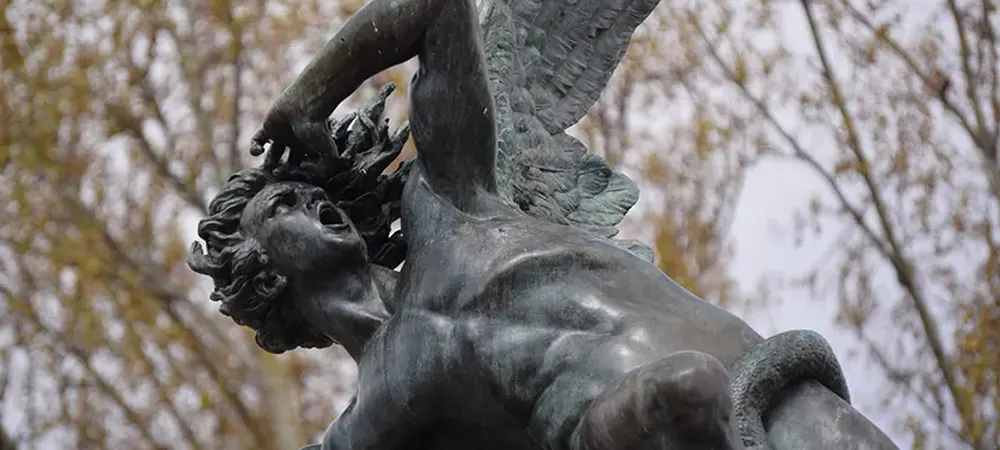
History of Lucifer
Lucifer, also known as Luzbel or Satan, is the fallen angel who, according to Christian tradition, was the original enemy and tempter of God. His name comes from Latin and means “bearer of light”, and in Ancient Greece it was used to refer to a morning star. Later, the Christian tradition adopted the name to represent the fallen angel, who, endowed with great beauty and intelligence, ultimately rebelled against God. His pride led him to be exiled along with the third part of the celestial court, resulting in one of the greatest cosmic dramas ever to happen. After being exiled, he adopted the name Satan and became the great adversary and embodiment of evil on Earth.
Luzbel, the most beautiful angel of creation
According to history, Luzbel was the most beautiful angel created by God. He was endowed with great beauty and intelligence, making him God’s favorite and the most suitable to organize and lead the rest of the angels. He had the complete trust of God, but this was not enough. Seduced by his pride, vanity, and feeling of superiority over God, he dragged a large part of the celestial court into rebellion, whose final consequences were the existence of evil, pain, and death in the world.
“How you have fallen from heaven, morning star, son of the dawn!” (Is 14.12)
Lucifer was then the cause of one of the greatest cosmic dramas ever to happen. Exiled for his rebellion, he became the first fallen angel, the ideologue of evil, and the first tempter. From then on he would be Satan, the instigator of the dark side, and the adversary of God. However, after being exiled, Lucifer could still enter heaven, according to Job:
“And the Lord said to Satan: ‘Where have you come from?’ Then Satan answered the Lord, and said: ‘I have been traveling the earth and walking on it. (Job 1:7; 2:2)'”
Thrown to Earth
The entrance to heaven was forbidden to him centuries later, during the time of Jesus. According to the Apocalypse, the sacrifice of Christ was essential in confining him to Earth. In Apocalypse 12 (The woman, the dragon, and the child), it is said that Satan was defeated by the blood of the Lamb and then thrown to Earth, along with his army, by the Archangel Michael. From then on, neither he nor his followers would have a place in heaven.
Despite the magnitude and importance of his history, Lucifer is little mentioned in the Bible, although there are numerous references to the demon, the Devil, and Satan, which for the Christian tradition is almost the same. It is known that he was mentioned in ancient Bibles, but over time he disappeared. His history is also full of contradictions and is little developed in Sacred Scripture. Some experts have mentioned that his myth comes from a misunderstanding or translation error, since his name, which in Latin means “bearer of light”, has been taken as a proper name.
Is Lucifer, the Devil and Satan the same thing?
In Christian tradition, Lucifer, the Devil, and Satan are the same entity, although their descriptions may vary in some aspects. In the Old Testament, Satan is mentioned as the enemy or adversary, with no relation to fallen angels or demons. Later, he became the representation of evil and the enemy of divine power.
In the New Testament, Satan appears as the Devil, although he is also known by other nicknames: Father of Lies, Evil One, Dragon, Ancient Serpent, Seducer of the Whole World, Prince of Demons, Beelzebub, among others. Lucifer, on the other hand, is not mentioned directly in the Old Testament, but appears as the “bearer of light” or “beautiful light”.
It is important to note that for Christianity, Lucifer is the name of the angel before his fall and Satan is the name he adopted after his fall.
The first and other fallen angels.
The fallen angels are those who have turned away from God after questioning him. As a result, they were banished from heaven and, in many cases, sent to hell. Depending on the source, there are two versions of the fall of angels: the biblical version in which Satan (or Lucifer) is the leader, and the version in the Book of Enoch, where 200 angels fall in total, led mainly by Semyazza.
The Watchers and the Book of Enoch.
In the version of the Book of Enoch, the fallen angels, known as “Vigilantes” or “Grigori”, were sent to Earth to care for humanity. However, they fell in love with the daughters of man and married them, knowing that this would condemn them. Their children, the Nephilim, are mentioned in the Bible as giant semi-gods.
“And it came to pass, when men began to multiply on the face of the earth, and daughters were born unto them, that the sons of God saw the daughters of men that they were fair; and they took them wives of all which they chose.” Genesis 6
The fall of the angels was not primarily due to lust, but to the revelation of secrets and the estrangement from God caused by doubts and insults. Among humans, the Watchers began to teach the art of war and the creation of weapons, which caused an imbalance among the first human beings. Finally, tired of the abuses, God expelled them from Paradise with the help of the archangel Michael.
One of the first fallen angels was Lucifer, who, seduced by his vanity, competed against God and was banished along with a third of the heavenly court that had joined him. In the Book of Enoch, it was Semyazza who led the Watchers (Grigori) to take human wives and teach humans different arts and knowledge. Semyazza was the leader of the 200 fallen angels and one of the 20 Watcher leaders, to whom all had pledged loyalty.
Lucifer in film and television
In cinema and television, there have been many representations of the fallen angel. Examples include the television series “Lucifer” (2016-2021) based on the DC Comics character created by Neil Gaiman and the films “Constantine” (2005), “Pact with the Devil” (1997), “Rosemary’s Baby” (1968), and “Prince of Darkness” (1987).
Religion
Benedict of Nursia

Benedict of Nursia biography
Benedict of Nursia (480 AD -547 AD) was born in Nursia, Italy. Religious, founder of the Order of the Benedictines and patriarch of the western monks. Benedict of Nursia is one of the most prominent figures of Christianity, his precepts and ideas have been transmitted by the religious and scholars from his death until today. Born into a family with great influence, he focused on the study of rhetoric, law, and philosophy. Later, he felt the call and isolated in the Subiaco desert, where he was ordained. In the following years, he dedicated himself to monastic life establishing various monasteries, subsequently wrote his best-known work, Regula monasteriorum (ca.540 AD), which he established as axes of monastic life, obedience, humility and self-denial, virtues for which the religious was known.
The information that is known about the life of the religious has been taken from the Book of dialogues of St. Gregory the Great, in which he delved into the childhood, youth and trajectory of the religious. He was born into a wealthy family that came from Rome, a city in which he carried out his academic training, at that time he learned about rhetoric, law, and philosophy. During this period of formation, Benedict observed the society in which he lived, which was corrupted by various vices, a situation that oppressed and worn him out, tired of this he decided to leave the world at twenty, to focus on his spiritual formation.
Benedict of Nursia the monk
He fled the city, taking refuge for a short time in Enfida, later retired to the Subiaco Desert, where he spent three years living in a small cave. During these years he lived facing various hardships and avoiding contact with other people. Around the year 503, he was discovered by a Roman monk, who conferred on him the monastic habit, followed by an abbot by a group of religious who lived around Vicovaro, in the company of these he lived for several years. However, later tired of the rigor and discipline of the abbot tried to poison him. After the threat, he founded twelve monasteries in the region with his faithful disciples and others who had come to him for help. These institutions were quickly occupied by monks.
In the monasteries, Benedict established a strict routine and monastic lifestyle that was based on the precepts shared in the Rule of St. Basil, a compendium of questions and answers in which the monk advised the religious on the appropriate way to behave and the bases of monastic life. The book highlights virtues such as obedience, renunciation, and self-denial since these should be the basis of all monastic life. Plácido and Mauro arrived at the monastery, children of the Tertulo and Equicio patricians, who became the most devout disciples of the monk. By this time the popularity of the monk had made him one of the most prominent figures of his time, which caused the emergence of resentment by other brothers, such as the priest Florencio.
Florencio prominent religious of the sixth century, motivated by jealousy decided to attack the selfless monk, whom he tried to poison by means of bread. After the failure of this method, he planned to affect the monk by tempting his disciples. However, his plans had no results and shortly thereafter he died due to the collapse of the place where he lived. Upon overcoming the new threat, Benedict moved to Campania along with some of his disciples, founded the famous Cassino (Montecassino) on the site, to settle in the place he collapsed the vestiges of paganism that remained in the area, such as the altar of Apollo built for the inhabitants. In the same place, he installed the prayer centers of San Juan and San Martín.
After the installation of the oratories Benedict and his disciples inhabited the monastery, which over time became the largest center of knowledge of Christendom. Benedict spent the rest of his life in the monastery where he worked and prayed the monks rigorously following the foundations of monastic life; while the monk lived selflessly, he wrote Regula monasteriorum, a work for which he is one of the most prominent figures of Christianity. In Regula monasteriorum (Rule of monasteries) or Rule of St. Benedict, the monk meets the precepts of monastic life, having as its main mandate the Ora et labora (prays and works), to fulfill this the monk created a rigorous schedule in which took into account the environment in which the monastery lived so that the religious took advantage of every moment of the day regardless of the season of the year. In the book, Benedict established hours for work, prayer and rest.
This book profoundly influenced the way they have lived or the cenobites since then, with some modifications it has continued to be applied as a model in the life of the monastic community. The influence of the monk’s ideas and ideas spread throughout the Carolingian era (VIII-IX) and has remained in the Benedictine Order.
The prominent religious died on March 21, 547 A.D., at age of 60. At the end of the 8th century, his feast began on July 11, since then on that date the saint is commemorated, although, it is usually celebrated on March 21, and since it was the day he died.
History
Urban II

Urban II biography
Urban II (1042 – July 29, 1099) Promoter Pope of the Crusades. Odón de Chantillón, christening name, was born in Chantillón Sur Mane, France. From the French nobility. He embraced early the ecclesiastical vocation, studying in Reims, later he joined the Benedictines and joined the Order of Cluny.
He served as prior of the Benedictine monastery of Cluny since 1073. His ecclesiastical life began to be more solid, holding important positions, as Archdeacon of Reims. When finishing the position of prior was requested along with other monks, by Gregory VII, to move to Rome to fulfill his ecclesiastical duties. Over time, his good work led Gregory VII to appoint him Cardinal Bishop of Ostia and in 1084 he was a delegate, adviser and principal assistant to the Pontiff in Germany. Urban II felt an extreme admiration for Gregory VII, read all his speeches and listened attentively to each intervention, and was his support in the hard task of reforming the Church. From 1083, and during two years, he exerted diplomatic functions in France and Germany, where he was captured as a prisoner by Henry IV.
On February 25, 1080, Clement III was appointed Pope by Emperor Henry IV, of the Germanic Roman Empire. This appointment violated the rules of the church, making the designated antipope. This act unleashed the well-known complaint of investiture, a conflict in which the Church basically protested against the appointment of bishops and popes by the emperor, demanding autonomy in order to elect its members from their own institution.
In the Dictatus papae of 1075 we can find the sustenance of the actions of Gregory VII, defending the idea that only the pope could designate and depose the bishops as head of the Church; and took his authoritarianism to defend that it also concerned the pope the appointment of kings, because they have a delegated power of God. But this was not respected, during the reign of Henry V, where the conflict between the parties intensified.
Gregory VII remained under siege in the castle of Sant’Angelo until the Normans of Sicily rescued him, after the rescue Gregory VII, died. Thus, the attempt to impose the Papacy on the secular domains deviated, although the same policy would be sustained by his successor and admirer, Urban II. On March 12, 1088, he was elected by unanimous vote, assuming by name, that of Urban II, and promising a continuation of the policy of Gregory VII, his exemplary predecessor.
He became the first Cluniac Pope. During the first six years of his pontificate, he could not enter Rome because of the presence of the antipope Clement III, imposed by Henry IV, the emperor of the Holy Roman Empire. The stability of the country was in chaos, and Rome was militarily besieged. So he had to exercise his papal work outside of Rome. In addition, he excommunicated Philip I, for repudiating his wife and supported St. Anselm of Canterbury against King William II of England. He recalled the decrees against simony, forbade the obligation of ecclesiastics to take an oath of fidelity to the laity, the concubinage of clerics and the ecclesiastical investiture in charge of laymen.
While trying to penetrate Rome, Urban II was taken prisoner by Emperor Henry IV but was released very soon. He moved to Saxony where he deposed those whom the Pope had condemned while alive. He held a large synod in Quedlinburg, in which the antipope, Guibert de Ravenna, and his supporters were condemned by name.
Urban II has been recognized for promoting the crusades, in this sense, for 1095 he met a council in Clermont, in which he issued a speech encouraging all Christians to reconquer the sacred places of Palestine in the hands of the Turks, agreeing as a stimulus granting of indulgences and economic advantages for gaining a productive and poorly populated territory for the Catholic religion. From this moment, the holy war against Islam was his banner.
Urban II, a refugee on the Island of San Bartolomé, decided to take his place in Rome, usurped by Clement III, accompanied by the Norman army, who managed to claim the post of Urban II, after bloody fights. Both the emperor and the antipope were excommunicated, although the war against them did not cease.
After several years of battles, assaults, treaties, betrayals, deaths, diseases, and conquests, the Crusaders managed to conquer Jerusalem on July 15, 1099. But Urban did not live to know the news of this event. He died in the house of Pierleone, on July 29, 1099. His remains could not be buried in the Lateranense because the followers of Guiberto still remained in the city, so they were taken to the crypt of San Pedro where they were buried close to the tomb of Hadrian I.
Urban II is relevant in the history of the Catholic Church and also in world history, although his party has never been extended worldwide. His work as Pope was important, in the apse of the oratory of the Palace of Lateran is the figure of Urban II, accompanied by the legend, Sanctus Urbanus Secundus, the head is crowned by a square cloud and is at the feet of Our Lady. The formal act of his beatification took place in the pontificate of Leo XIII.
Religion
Saint Augustine of Hippo

Saint Augustine of Hippo biography
Aurelio Agustín de Hipona (November 13, 354 – August 28, 430) theologian. He was born in Tagaste, currently Algeria. His father named Patricio was a pagan, violent, drinker and infamous official at the service of the Empire. His mother Monica, on the other hand, was sweet and self-sacrificing, living her life under the Christian religion. She educated her son in her religion, although, she did not baptize him. Agustín had an irascible personality, a superb and unruly attitude, although exceptionally intelligent. For this reason, he took charge of his studies, although he was slow to apply them; After completing the grammar classes in his native land, he studied the liberal arts in Metauro and then rhetoric in Carthage. In his youth, he certainly did not follow the moral precepts instilled by his mother and until he was 32 years old, he led a licentious life, clinging to the Manichean heresy.
At eighteen, Agustín met his first concubine, with whom he had a son whom they named Adeodato. He was not really an exemplary father, he lived among the excesses, he had an inordinate fondness for theater and other public spectacles, he was also blamed for some robberies. This lifestyle made him renounce his mother’s religion. He claimed that Christianity was an imposed faith and was not founded on reason. He began to take an interest in philosophy, and in these postulates found accommodation for some time, he leaned towards moderate skepticism. However, in Carthage joins a group that preached Manichaean dogma, from that moment he was able to resolve his many concerns about various moral problems, which would accompany him throughout his life, was determining his adherence to Manichaeism, the religion of fashion at that time. Basically, he argued that there are two principles of all things, dualism, a principle of good and another of evil. The first has created spiritual things and the second the materials.
In 384 Agustín de Hipona travels to Milan to practice as a professor of oratory. There he delves into the ancient thinkers and devours some texts of Neoplatonic philosophy. The reading of the Neoplatonic authors probably weakened the Manichean convictions of Augustine and modified his conception of the divine essence and of the nature of evil; equally influential would be the sermons of St. Ambrose, bishop of Milan, who argued on the basis of Plotinus to demonstrate the dogmas and whom St. Augustine listened to with complacency, and this bishop had the ability to give brilliant interpretations of the bible.
“Pray as if everything depended on God. Work as if everything depended on you.” Saint Augustine of Hippo
In his search for the truth he studied the epistles of St. Paul, through them he discovered the affirmation that only the grace of Christ can save man, a doctrine that was another pillar of his thinking in the future. Over time he gave himself up to burning hymns, fasting, and various abstinences. Fully converted, in 387, when he was 33 years old, he was baptized by St. Ambrose and consecrated himself definitively to the service of God. He began to share more time with his mother, to share the word of God, unfortunately, the time was short because death interrupted it.
For the year 388, he returned to Africa. Some years later he was ordained a priest in Hippo by Bishop Valerio, who entrusted him with the mission of preaching among the faithful the word of God, a task that St. Augustine fulfilled with enthusiasm. To do this, Bishop Valerio donated a garden where he instituted a monastery, where he held preachings, even to enunciate a sermon before the bishops of Africa, gathered in Hippo, in 393. His recognition aroused admiration and hatred among people, for example, he received strong criticism from heretical currents and schisms that threatened Catholic orthodoxies, such as the Manichaeans, Pelagians, and pagans.
The situation in the Roman Empire for the year 410 was complex, the pagans reorganized their attacks against Christianity. In response, St. Augustine wrote his great work The City of God. It is a compendium of postulates divided into 22 books, expressing a new form of civil society, which aims to promote the values of humanity by virtue of living according to Christian doctrine. In conclusion, for Hippo, a fully Christian Rome could move from an earthly empire to a spiritual one.
“The measure of love is to love without measure.” Saint Augustine of Hippo
His philosophical works such as the Soliloquies, the Confessions and The City of God, are the sample of his extraordinary testimonies of faith and his theological wisdom. His dissertations usually had as a central theme the relationship of the soul, lost by sin and saved by divine grace. In short, man contains an immortal rational soul that serves, as an instrument, a material, and mortal body. Hence his character essentially spiritualist, against the cosmological tendency of Greek philosophy. Augustine of Hippo lived 40 years of his life consecrated to the service of God, he died at the age of 72, in the year 430.
The thought of Saint Augustine of Hippo extended a bridge between the classical world and the medieval world, also laid the foundations of philosophy and Christian doctrine.
























